
Must visit and must do
Are you looking for authenticity, do you want to delve into Greco-Roman history, are you more interested in the local culinary specialties, or do you want to stroll through narrow, white streets and have a cocktail on the beach? A description of a few suggestions for every type of traveler from the range of possibilities below, each with an indication of the distance to the trullo.
Since the whole region is characterized by its white villages that are usually built on hills, and conical houses called ‘trulli’ (trullo = singular), you really can’t miss it. Take the time to thoroughly discover some villages, taste the regional products, be surprised, and visit a market if you can. If you don’t have much time, you can also google various ‘white villages routes’, to drive them by car, vespa or bicycle. In Ostuni you will find both bicycle and scooter rental.
Cities
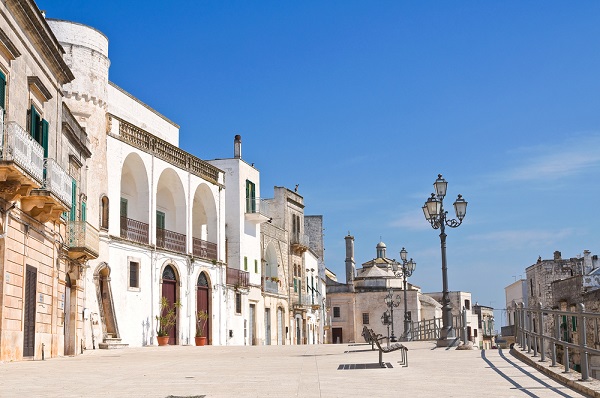
Cisternino 7,7 km
1 of the ‘borghi più belli d’Italia’, or 1 of the most beautiful villages in the country. Narrow, cozy streets, charming squares, beautiful churches, and especially known for the many butcher shops that are also restaurants. The specialty of the village is ‘bombette’, stuffed ‘bombs’ made of pork with minced meat, cheese or ham or bacon.
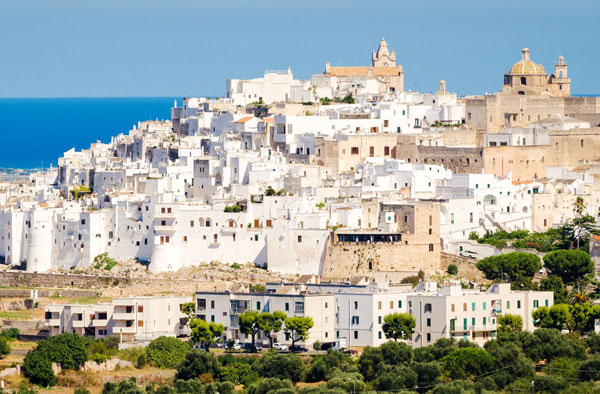
Ostuni 7,4 km
Although all the towns in Puglia are mainly chalked white, Ostuni is the insta photo spot par excellence, and therefore slightly more touristy. In this white city you will not only find photogenic alleys, souvenir shops, squares and churches, but also delicious coffee and gelato vendors, and lovely locations for an extensive aperitif or dinner.
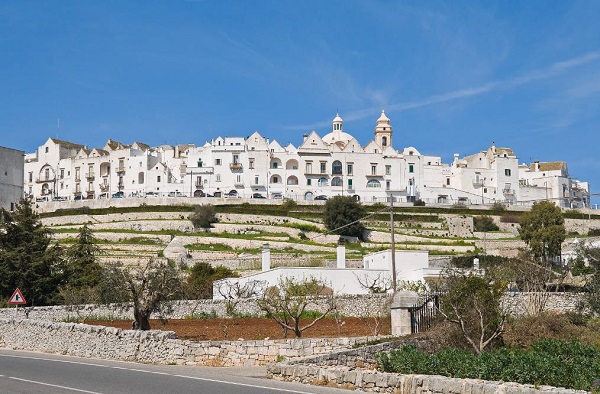
Locorotondo 18 km
Quiet village, also 1 of the borghi più belli, which owes its name to the circular street plan. Known for the beautiful view of the Valle d’Itria and the numerous trulli, and also for its white wine ‘Locorotondo DOC’.
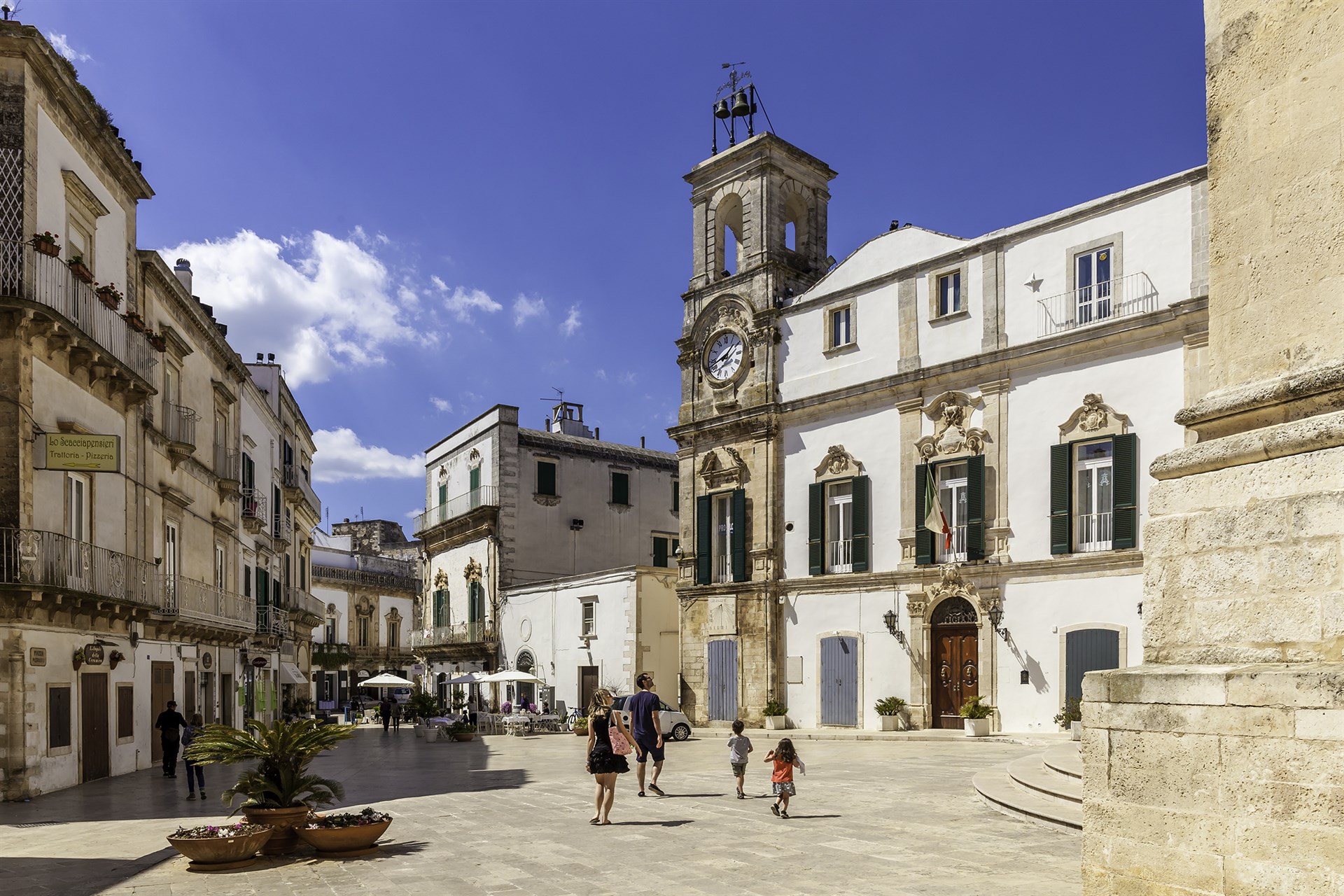
Martina Franca 18 km
This maze of white streets is again a backdrop of beautiful baroque architecture such as cathedrals and beautiful mansions or ‘palazzi’, which was completely walled in the 18th century, whereas now only the 4 city gates remain.
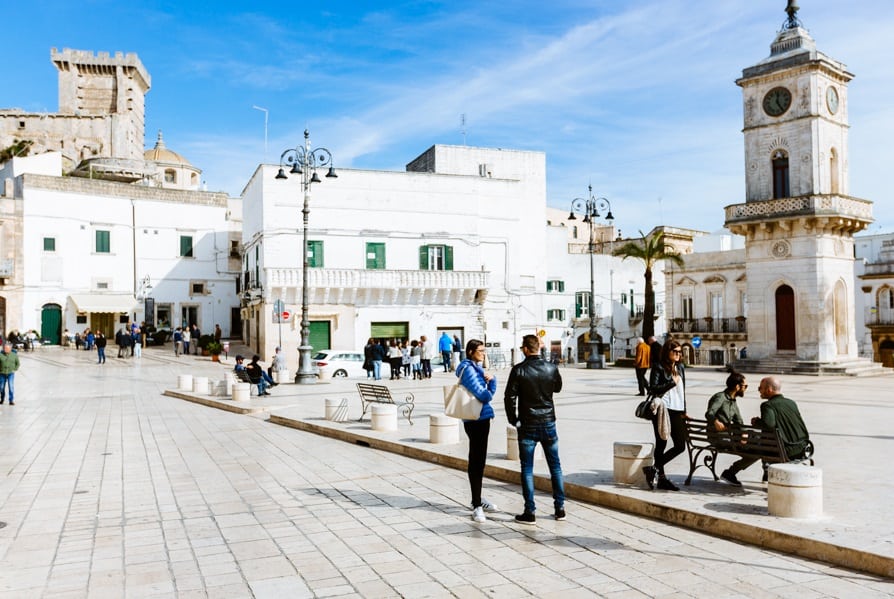
Ceglie Messapica 14 km
This white town is similar to Ostuni, but less touristy. Also known as the city of gastronomy, as chefs from all over the country come here to study gastronomy.
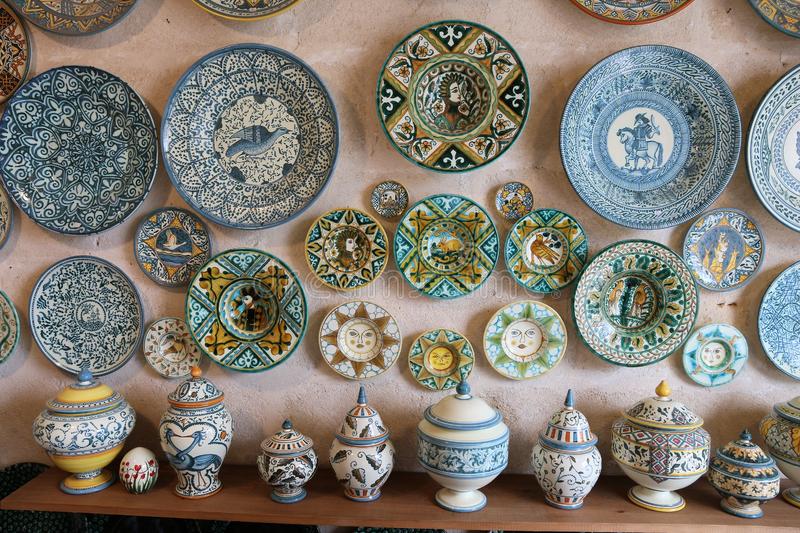
Grottaglie 29 km
Ceramic town, where pottery is still traditionally handmade. Strolling through this town you can find the artists in their studios, modeling or painting in the summery shades of Italy.
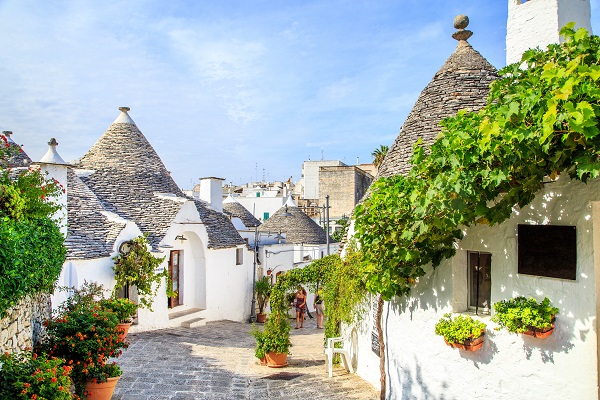
Alberobello 27 km
Also called the capital of the trulli, Unesco World Heritage, and therefore one of the most visited villages in the region for good reason. Here you will find a collection of most of the trulli together, including some special trulli such as a 2-storey trullo, trulli arranged as a museum, a twin trullo, a church trullo, as well as trulli with religious symbols painted on them.
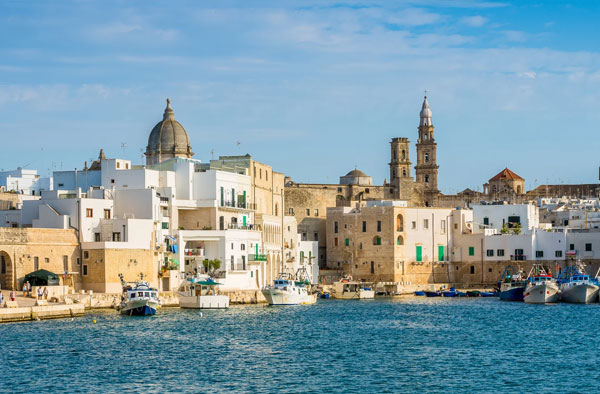
Monopoli 39 km
In this idyllic harbor town with its colorful fishing boats, there is plenty of time to taste the local fish specialities. And this lively maze of streets is also perfect for a walk between the many authentic churches, the white houses with hanging wax, and the old city walls.
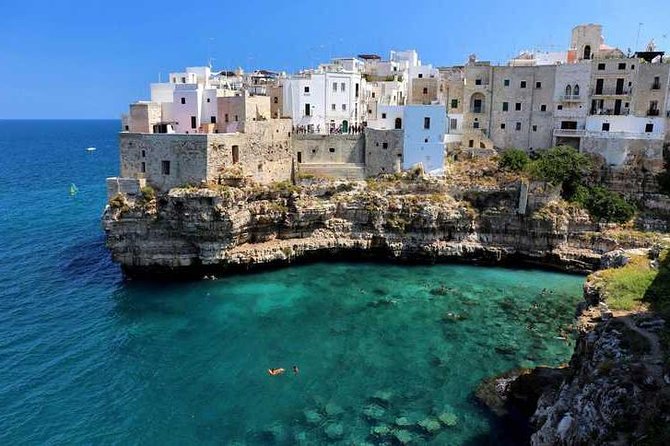
Polignano a Mare 45 km
Built on a limestone cliff, this pretty coastal town is also the birthplace of the late Domenico Modugno who released the world hit ‘Volare’. There are also public pebble beaches.
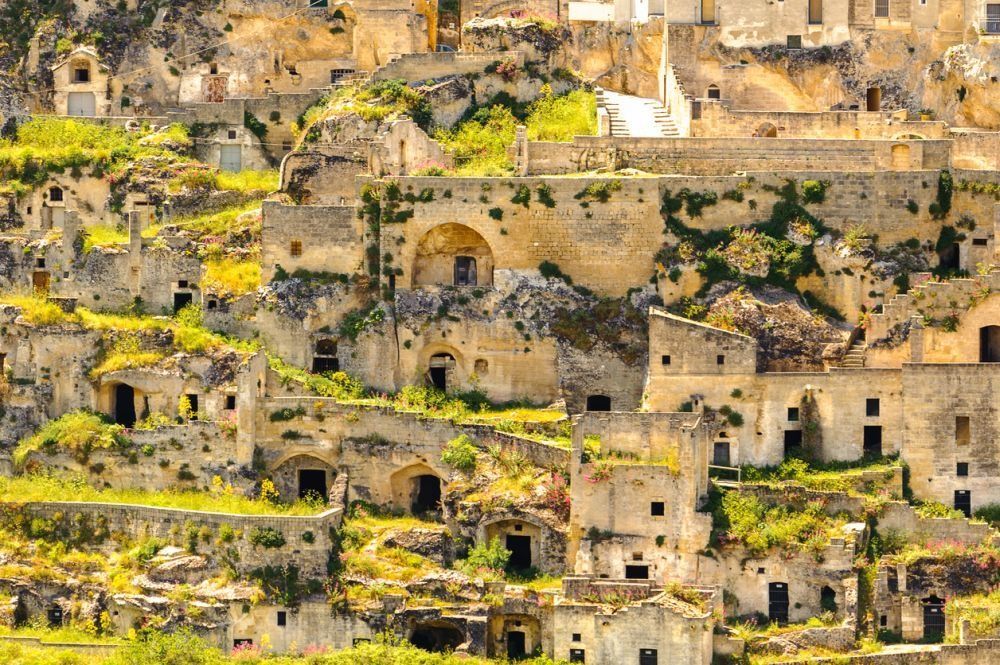
Matera 95 km
Unesco World Heritage, frequently used as a film location or as the final destination of the Tour of Italy, European Capital of Culture in 2019, and really worth a visit. The old town is located on a slope above a gorge where the houses, called Sassi, are hewn out of the rock. Most of these houses were inhabited until 1952, after which the government banned further occupation for hygienic and sanitary reasons, as large families lived with their animals in the same rooms. Now you will find some beautiful churches with frescoes, restaurants, bars, reconstructed cave houses, souvenir shops, and above all wonderful viewpoints with a view of the city and its surroundings.
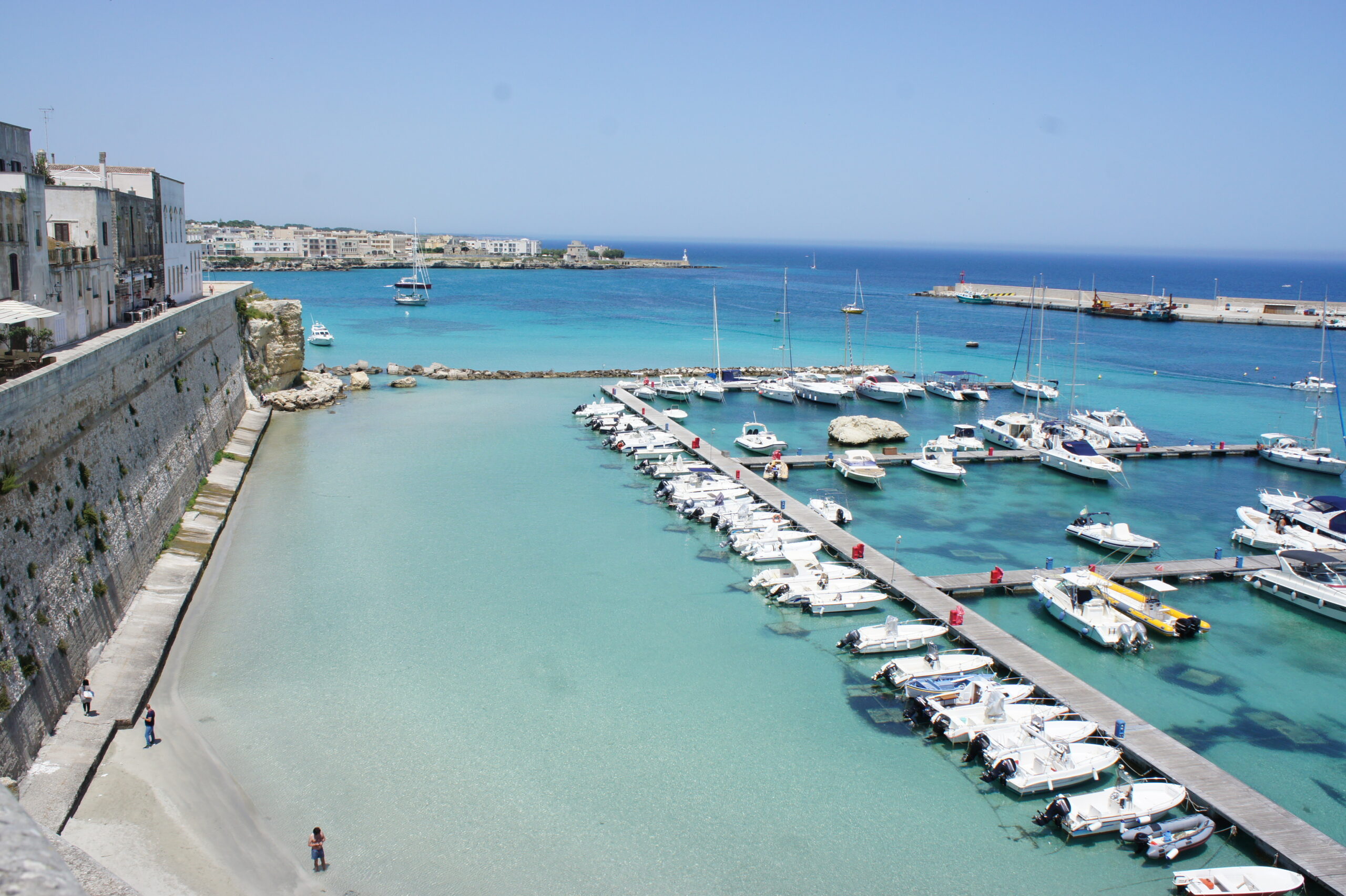
Otranto 114 km
The easternmost village in Italy, and one of the ‘borghi i più belli d’Italia’, one of the most beautiful villages. Here in this coastal spot, where time has stood still, you will not only find historic sights such as the castle and the cathedral, which both illustrate the eventful history of this port town, but Otranto is also known as a diving spot, and in the summer the beaches are quite busy.
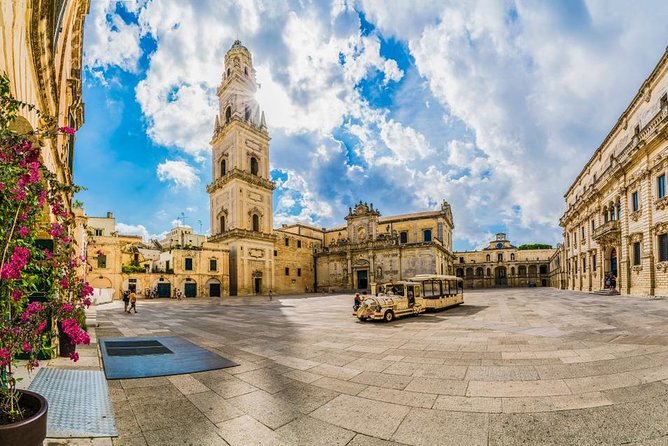
Lecce 76 km
This trending capital of southern Italy is definitely worth a visit. The car-free old city center is pleasantly busy in summer and winter, thanks to its many shops and cafes, and beautiful baroque architecture. You will find both fashion brands and creative art, between the stylish terraces and the local delicacies.
Markets
A fantastic place to visit while in the area, not only for fresh fruit and vegetables, but also for cheese, ham, olives, herbs,… you can even buy clothes and shoes for a good price. What more could you want when you’re on vacation?
- Monday: Cisternino
- Tuesday: Carovigno
- Wednesday: Martina Franca
- Thursday: Brindisi
- Friday: Locorotondo
- Saturday: Ostuni
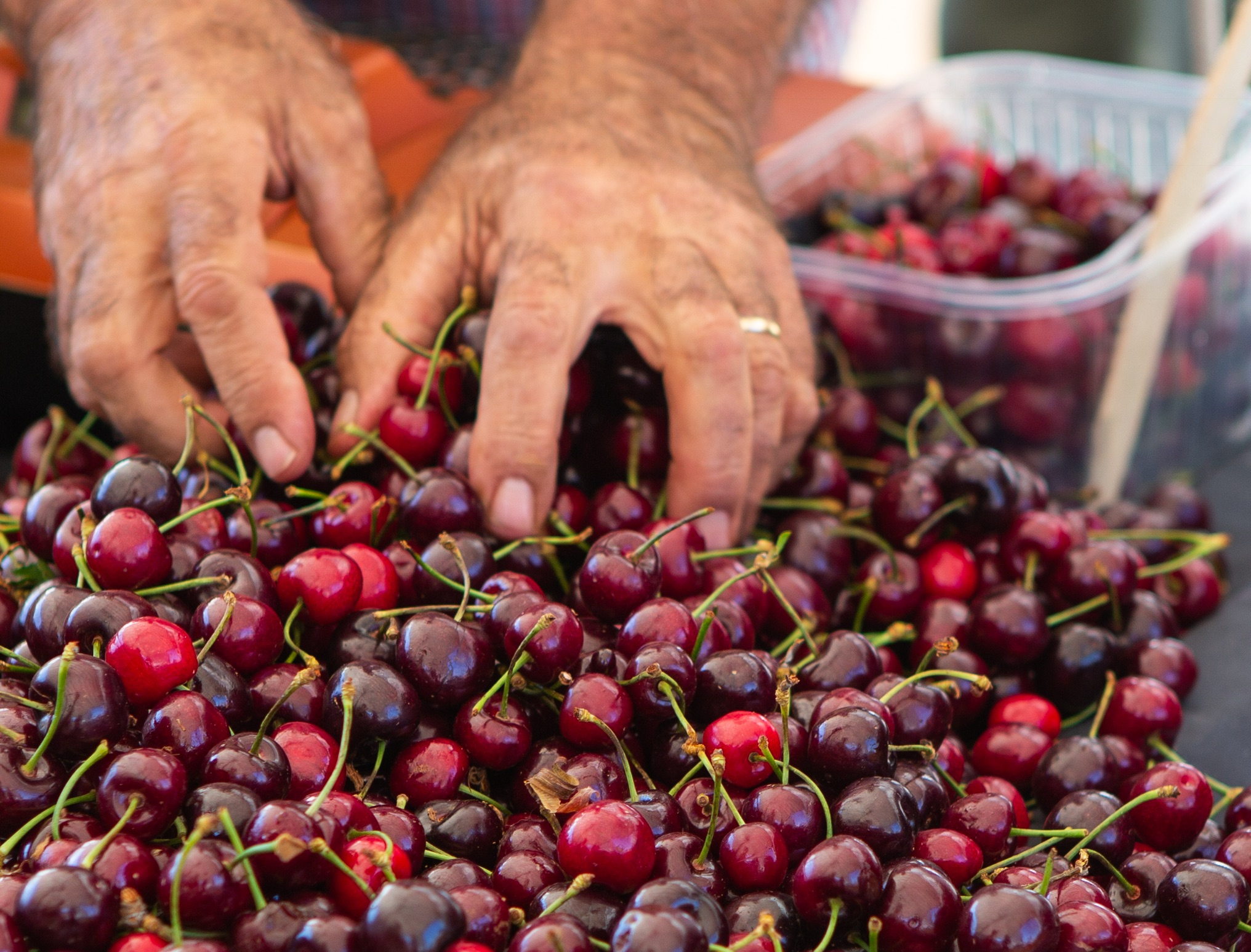
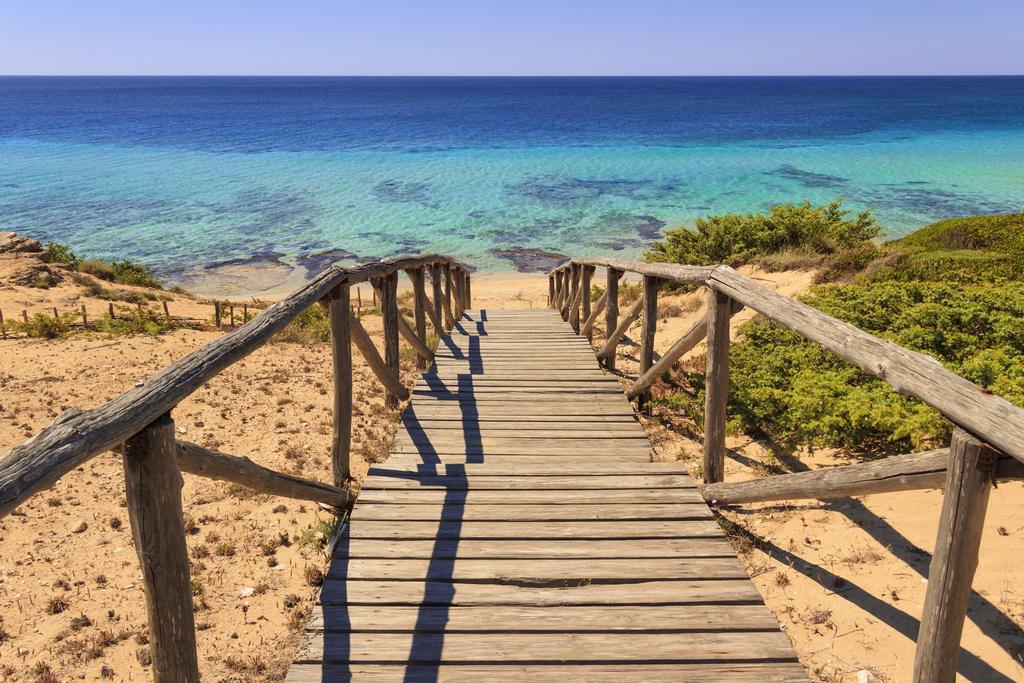
Beaches
Distance to the sea: 15 km, where several pebble and sandy beaches await, and bars are never far away.
- Torre Cane
- Pilone
- Lido Stella
- Monticelli
- Diana Marina
- Marina di Ostuni


